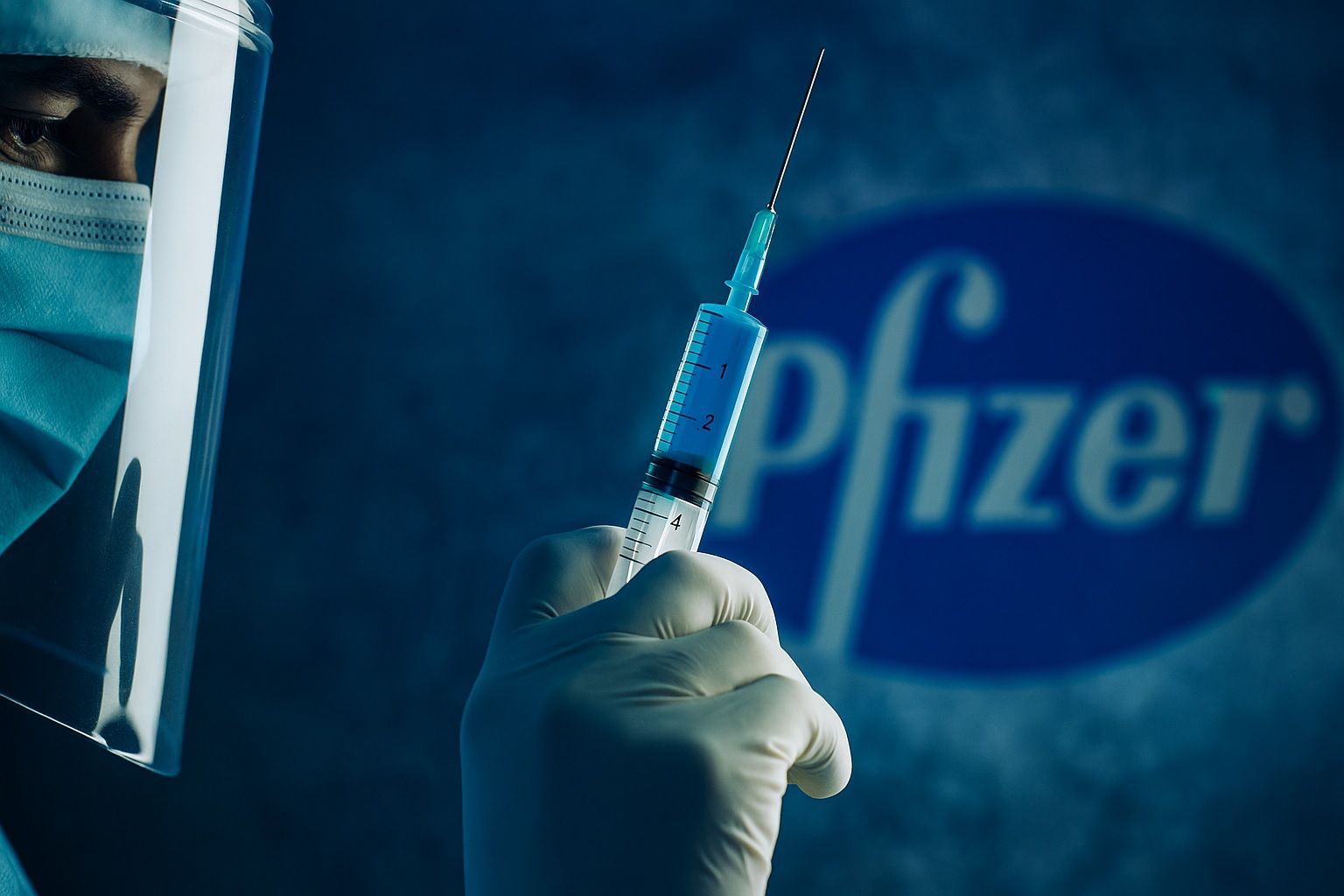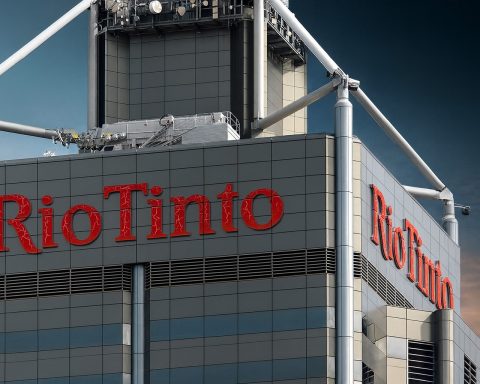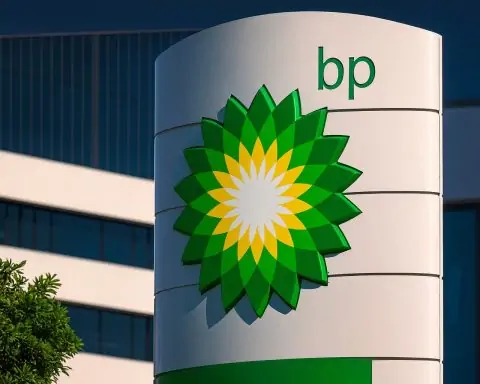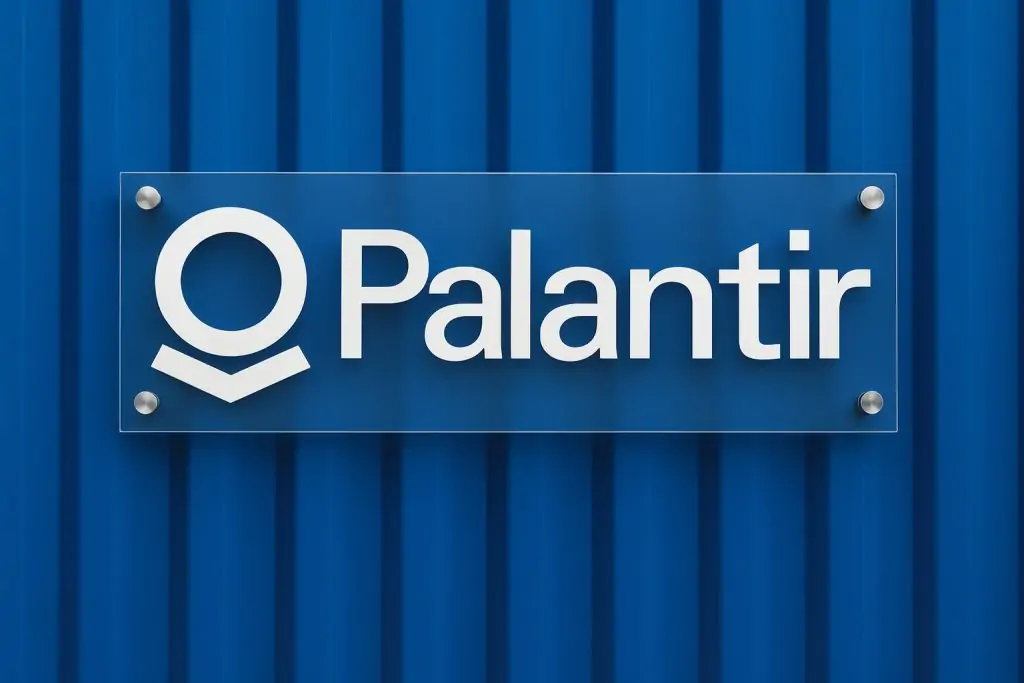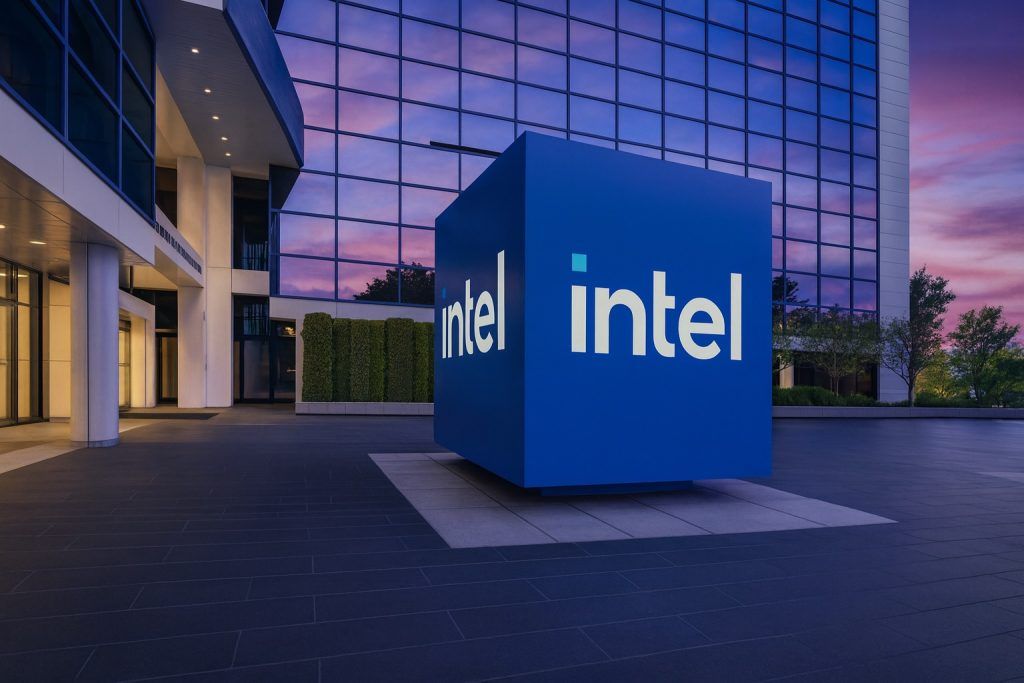New York — As U.S. markets get ready to reopen on Monday, November 17, 2025, Pfizer (NYSE: PFE) heads into the week at a critical turning point: COVID cash flows are fading, an obesity-drug arms race is heating up, a major activist has just walked away, and management is betting billions on a new growth story.
Here’s a concise but detailed rundown of what investors should know about Pfizer stock before the opening bell.
1. Where Pfizer stock stands right now
Pfizer shares closed on Friday, November 14, 2025 at $25.06, down 2.83% on the day, with volume around 96.5 million shares, well above its recent average. [1]
Key snapshot as of Friday’s close:
- Share price: $25.06
- 52‑week range: roughly $20.9 – $27.7 [2]
- Market cap: about $142 billion [3]
- Trailing P/E: ~13x earnings
- PEG ratio: ~0.8, implying growth-adjusted valuation that’s cheaper than the overall market [4]
- Dividend yield: about 6.8%–7.0%, depending on the data provider and the exact price used [5]
- Short interest: roughly 2.2% of float as of October 31, 2025 [6]
Year-to-date, Pfizer stock is down about 5% in 2025, even though the shares are now trading close to their 52‑week high. [7] That underperformance versus the wider healthcare sector is one reason why the company keeps attracting both bargain hunters and skeptics.
2. Q3 2025 earnings: guidance up, COVID revenue down
Pfizer’s third-quarter 2025 results, released earlier this month, are the fundamental backdrop for PFE heading into Monday:
- Q3 2025 revenue: about $16.7 billion, down 6% year over year, mainly because COVID-19 products continue to shrink. [8]
- The company highlighted that the decline was largely driven by 55% lower sales of Paxlovid and roughly 20% lower Comirnaty (COVID vaccine) revenue, as infection rates fell and U.S. vaccine recommendations narrowed. [9]
- Adjusted EPS:$0.87 in Q3, significantly above Wall Street estimates, giving management enough confidence to raise full‑year 2025 EPS guidance for the second quarter in a row. [10]
Updated 2025 outlook:
- Adjusted EPS: now $3.00–$3.15, up from $2.90–$3.10 previously. [11]
- Revenue: still projected at $61–$64 billion, so the profit improvement is coming mainly from cost controls, mix, and tax effects, not top-line acceleration. [12]
Pfizer has also benefited from a lower effective tax rate, helped by the new U.S. tax legislation informally dubbed the “One Big Beautiful Bill Act,” which reduced the corporate rate and triggered a favorable remeasurement of deferred tax liabilities. [13]
Overall, Q3 showed a company that’s managing the COVID comedown better than feared, but still facing negative year-over-year revenue growth.
3. Metsera: Pfizer just bought itself back into the weight-loss race
The single biggest strategic story around Pfizer right now is its new bet on obesity drugs.
After a bruising bidding war with Novo Nordisk, Metsera shareholders on November 13, 2025 approved Pfizer’s offer of up to $10 billion for the clinical-stage obesity specialist. [14]
Deal terms & structure
- Total value up to $10 billion, including:
- $65.60 per share in cash up front
- Up to $20.65 per share as a contingent value right (CVR), tied to clinical and regulatory milestones [15]
- The deal values Metsera at about $86.25 per share when including the CVR. [16]
- Metsera is now a wholly owned subsidiary of Pfizer. [17]
Why it matters for Pfizer stock
- Re‑entry into a $150 billion market: Obesity drugs are forecast to be a $150 billion‑plus market by the early 2030s, dominated today by Eli Lilly and Novo Nordisk. Pfizer previously stumbled in this field; this deal is its do‑over. [18]
- A highly competitive GLP‑1 portfolio:
- Metsera’s lead candidate MET‑097i, a GLP‑1 receptor agonist, showed placebo‑adjusted weight loss of about 14% at 28 weeks at the highest dose in a mid-stage trial — with a low discontinuation rate (~3%) and the possibility of once‑monthly injections. [19]
- The portfolio also includes amylin analogs, oral GLP‑1 candidates, and other early‑stage hormone-based therapies, giving Pfizer multiple shots on goal in obesity and cardiometabolic disease. [20]
- Financial impact: Pfizer has already cautioned that the Metsera deal is expected to be dilutive to earnings through 2030, as it pours money into late-stage trials and launches. The company plans to update the financial outlook when it issues 2026 guidance later this year. [21]
In other words, Metsera is a long-term growth bet, not a quick earnings fix. Short-term, it increases R&D and integration risk; long-term, it could be the franchise that replaces some of Pfizer’s looming patent losses.
4. Obesity pipeline: from danuglipron flop to second chances
Pfizer’s obesity story has been bumpy in 2025.
- In April 2025, Pfizer discontinued development of danuglipron, its internal oral GLP‑1 candidate for chronic weight management, after a potential drug‑induced liver injury was observed in one study participant. [22]
- That decision left Pfizer with just one notable internal obesity program, PF‑07976016, a GIPR antagonist still in Phase 2 trials for chronic weight management. [23]
The Metsera acquisition is essentially Pfizer’s answer to investor concerns that its obesity pipeline had become too thin. Between PF‑07976016 and Metsera’s portfolio (MET‑097i and others), Pfizer is trying to rebuild its position in an area that investors now treat as premium growth real estate.
For PFE stock, the key questions heading into Monday — and for many quarters ahead — are:
- Can Pfizer move MET‑097i and its combination regimens into Phase 3 quickly and competitively?
- Will safety and tolerability remain favorable as trials scale up?
- How effectively can Pfizer compete on pricing and access against entrenched GLP‑1 leaders Lilly and Novo?
Investors who buy Pfizer for its obesity optionality are implicitly betting that Metsera’s science plus Pfizer’s global scale will be enough to carve out a meaningful slice of this market.
5. BioNTech stake sale: COVID era winds down, cash redeployed
Another fresh headline weighing on sentiment: Pfizer has slashed its stake in BioNTech, its COVID vaccine partner.
- On November 13, 2025, Pfizer disclosed that it sold 54.7% of its BioNTech holding, leaving about 1.66 million ADSs, worth roughly $163.5 million as of September 30. [24]
- The move marks a strategic shift away from the peak COVID windfall, even as Pfizer and BioNTech maintain their mRNA collaboration. [25]
Commentary and trading data suggest that the BioNTech sale knocked Pfizer’s stock lower by around 2–3% in recent sessions, partly because it reminded the market how dependent Pfizer’s recent earnings were on COVID products. [26]
However, Reuters also notes that the COVID cash helped fund Pfizer’s Seagen acquisition, Global Blood Therapeutics, Biohaven, and now Metsera, all of which are meant to fill an expected $17–18 billion annual revenue hole from patent expirations between 2026 and 2028. [27]
So, the BioNTech stake sale is both:
- a symbolic end to the pandemic supercycle, and
- a funding source for Pfizer’s next generation of drugs.
6. Dividend: 348 straight quarters and a near‑7% yield
Income investors still see Pfizer primarily as a dividend stock, and nothing in the latest news flow changes that — yet.
- On October 9, 2025, Pfizer’s board declared a fourth‑quarter 2025 dividend of $0.43 per share, payable December 1, 2025 to shareholders of record as of November 7. This marks the 348th consecutive quarterly dividend the company has paid. [28]
- At Friday’s price near $25, that implies an annual dividend of $1.72, or a yield around 6.8%–7.0%. [29]
On a trailing GAAP basis, some data providers show Pfizer’s payout ratio close to 100%, which understandably makes investors nervous. [30]
However, if you compare the $1.72 dividend to Pfizer’s raised 2025 adjusted EPS guidance of $3.00–$3.15, the forward payout ratio is closer to the mid‑50% range, a level more in line with big‑pharma peers. [31]
Heading into Monday:
- The ex‑dividend date (Nov 7) has already passed, so new buyers won’t capture the December payment. [32]
- That said, the ongoing dividend stream is still a major component of the investment case for PFE, especially for income-focused portfolios looking at big pharma.
7. Earnings expectations and Wall Street sentiment
Analysts are cautiously constructive on Pfizer, but enthusiasm is still muted compared with high‑flying obesity peers.
Some key datapoints:
- MarketBeat aggregates 19 analyst 12‑month targets, with an average around $28.3, implying roughly 12–13% upside from Friday’s close. [33]
- Another consensus compiled by Investing.com puts the average target closer to $29, with a range of about $24–$36. [34]
- Ratings skew toward the middle: MarketBeat counts 2 “Strong Buy,” 4 “Buy,” 12 “Hold,” and 1 “Sell”, giving PFE an overall “Hold” consensus. [35]
On valuation, several commentators highlight that Pfizer’s P/E in the low‑teens is well below the S&P 500’s ~30x, reinforcing the idea that the stock is cheap if the pipeline delivers, but fairly valued (or worse) if obesity and oncology programs disappoint. [36]
Looking ahead, MarketWatch’s estimate page lists Q4 2025 EPS expectations around $0.63, with the next earnings report scheduled for February 3, 2026. [37] That date will be a major checkpoint on whether the company can keep hitting its raised guidance.
8. Activist Starboard Value exits: less pressure, more questions
Another notable shareholder development broke late last week: activist investor Starboard Value has exited its Pfizer stake.
- A November 14, 2025 regulatory filing showed that Starboard sold roughly 8.5 million Pfizer shares in Q3, fully liquidating a position that once totaled 15.4 million shares. [38]
- Starboard initially disclosed a roughly $1 billion stake in October 2024, publicly criticizing Pfizer’s management and urging the board to hold leadership accountable for underperformance. [39]
- Pfizer’s market value is now about $142 billion, down from roughly $162 billion when Starboard’s campaign began. [40]
What this means for PFE:
- On one hand, Starboard’s exit removes near‑term activist pressure for dramatic strategic moves such as break‑ups, mega buybacks, or radical restructuring.
- On the other, the exit can be read as a vote of no confidence that near‑term catalysts will be enough to significantly re‑rate the stock.
Investors will be watching closely to see whether new activists emerge or whether long‑only institutional holders — who own about two‑thirds of the float — continue quietly increasing their stakes, as some did in recent quarters. [41]
9. Key catalysts and risks to watch after the open
Heading into Monday’s session, here are the main issues likely to influence Pfizer’s share price over the next days and weeks:
a) Integration of Metsera and obesity data updates
- Any new details on Phase 3 timelines for MET‑097i and combination regimens. [42]
- Clarification of how much EPS dilution to expect from 2026 onward, once Pfizer updates its long‑term financial guidance. [43]
b) COVID & vaccines trajectory
- Ongoing declines in Paxlovid and Comirnaty remain a headwind; any surprising COVID waves, updated booster guidelines, or real‑world effectiveness data from conferences like IDWeek may move sentiment. [44]
- At IDWeek 2025, Pfizer presented data across COVID‑19, RSV, pneumococcal disease, Lyme, meningococcal disease, and influenza, underscoring that vaccines remain a core growth pillar beyond pandemic products. [45]
c) Patent cliff and oncology pipeline
- Between 2026 and 2028, Pfizer faces an estimated $17–18 billion annual revenue hit from patent expirations on key drugs. [46]
- Success in oncology programs (e.g., vepdegestrant, TUKYSA combinations, ELREXFIO expansions) and late‑stage vaccines will be critical in offsetting that cliff. [47]
d) Policy and pricing environment
- Pfizer recently signed a drug price deal with the Trump administration that lowers Medicaid prices in exchange for tariff relief, which may affect margins but could also reduce long‑term policy uncertainty. [48]
- Any new headlines on U.S. drug‑pricing reforms or global cost‑containment efforts could quickly spill over into big pharma valuations.
e) Technicals and market mood
- After a strong move off its 12‑month low, Pfizer is now trading about 9–10% below its 52‑week high, with heavy volume around recent headlines. [49]
- Short interest remains modest, so big moves are more likely to come from fundamental news than short squeezes.
Bottom line
Going into the November 17, 2025 open, Pfizer stock sits at the crossroads of three big narratives:
- Cash‑rich but COVID‑shrinking incumbent trying to reinvent its growth profile.
- High‑yield dividend payer that still looks inexpensive on traditional valuation metrics.
- New obesity contender, paying up to $10 billion to rejoin one of the hottest therapeutic categories in the market.
Whether PFE is attractive at today’s price will come down to your view on Metsera’s obesity pipeline, Pfizer’s ability to execute across oncology and vaccines, and your tolerance for near‑term earnings dilution and patent‑cliff risk.
Important: This article is for information and news purposes only and does not constitute investment advice. Always do your own research or consult a licensed financial adviser before making investment decisions.
References
1. www.marketwatch.com, 2. www.marketbeat.com, 3. www.marketbeat.com, 4. www.marketbeat.com, 5. www.marketbeat.com, 6. www.marketwatch.com, 7. finance.yahoo.com, 8. www.biospace.com, 9. www.reuters.com, 10. www.reuters.com, 11. www.reuters.com, 12. www.businesswire.com, 13. www.businesswire.com, 14. www.reuters.com, 15. www.pfizer.com, 16. www.reuters.com, 17. www.pfizer.com, 18. www.reuters.com, 19. www.barrons.com, 20. www.pfizer.com, 21. www.pfizer.com, 22. www.pfizer.com, 23. cdn.pfizer.com, 24. www.reuters.com, 25. www.reuters.com, 26. www.indexbox.io, 27. www.reuters.com, 28. www.pfizer.com, 29. www.marketbeat.com, 30. www.marketbeat.com, 31. www.businesswire.com, 32. www.marketwatch.com, 33. www.marketbeat.com, 34. www.investing.com, 35. www.marketbeat.com, 36. www.dailyforex.com, 37. www.marketwatch.com, 38. www.reuters.com, 39. www.reuters.com, 40. www.reuters.com, 41. www.marketbeat.com, 42. www.pfizer.com, 43. www.pfizer.com, 44. www.reuters.com, 45. www.pfizer.com, 46. www.reuters.com, 47. cdn.pfizer.com, 48. www.reuters.com, 49. www.marketbeat.com
